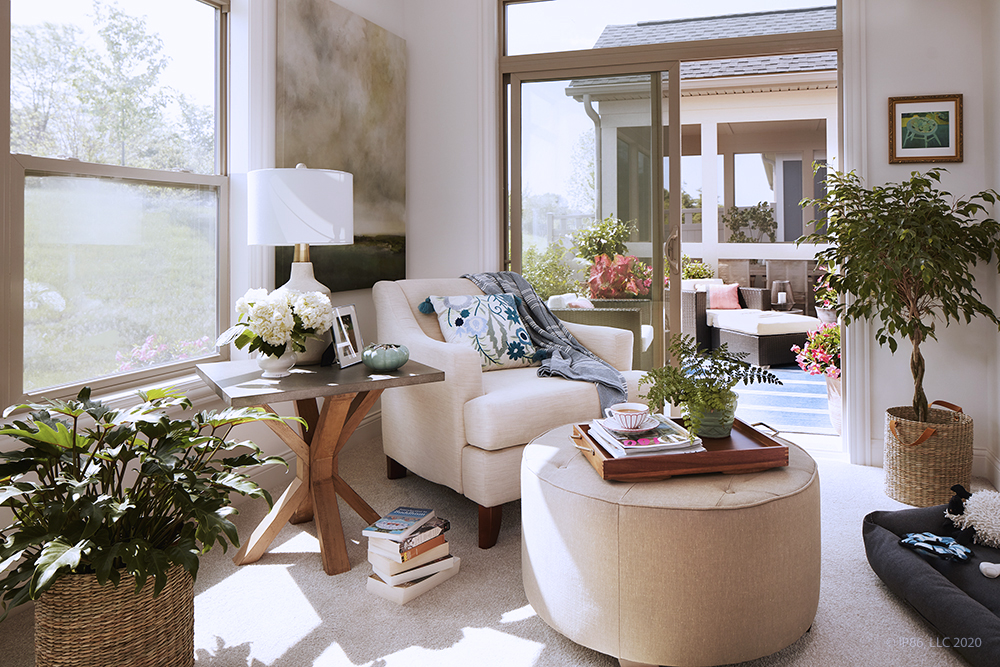

Given that you most likely spend a good deal of time in your home, it’s worth understanding how room color and lighting affect your mood and well-being. Research from the National Institute of Health has shown that differences in color and lighting can influence our mood and affect our circadian rhythm, which controls our sleep patterns and many other health factors.
A good deal of research has been done on how color affects mood, sometimes referred to as color psychology; however, personal preferences, experiences, upbringing, cultural differences, and context often skew the results and render them highly subjective.
A general rule of thumb is that dark colors will make a room feel smaller, while light colors will make a room feel larger and more open. If a dark color is desired for a specific room, but you want to maintain an open, expansive feel, you can paint one or two walls the dark color and leave the rest a lighter color to achieve the desired effect.
Choosing room colors often comes down to deciding what each room will be used for and what color would best create the mood for that room. Again, this is subjective and is more of a personal preference. It’s a good idea to work with a professional interior designer to determine paint colors that go with the furniture, furnishings, and textures you will have in each room to achieve continuity and the best overall result.
While changing room paint colors isn’t something you want to do very often, lighting can greatly affect room color and is much easier to control and change. Simple lighting changes to each room in your home can dramatically improve your daily mood, sleep, and maybe even cognition.
One of the best light sources for improved mood and cognition is natural light, which is why it plays such an important role in biophilic home design. Architectural design that allows natural light into your home provides many benefits, including increased productivity, enhanced connection to the outdoors, as well as energy savings.
LED lighting consumes up to 90 percent less power than incandescent lighting and can mimic the hue and intensity of natural sunlight. LED lighting systems can be manually controlled or set up to automatically mimic natural daylight by gradually changing from soft, warm amber in the morning to bright, cool white during the day and back to amber in the evening.
To achieve the best environment in your home with lighting—maximize sunlight and supplement it with LED lighting. Lighting specialists can help you choose the best lighting options for each room in your home to get the most benefit.

Understanding how room color and lighting can affect your mood and well-being highlights the importance of home design that includes biophilia. While lighting and, to some extent, wall colors can be easily changed, adding large windows with beautiful outdoor views to a private courtyard may not be feasible for most homeowners.
Scarmazzi Homes, a franchisee of Epcon Communities, has long understood the advantages of biophilic design and incorporates the generous use of large windows in our home designs, giving you the benefit of ample light in all the main living areas of your home. Every Scarmazzi Home features an exterior patio visible from the main living areas of the home. Step outside to enjoy the fresh air, the fragrance of your garden, and the satisfying experience of surrounding yourself with nature.
If you are ready to come home to a luxury patio home and enjoy the benefits of ample natural light, an open floor plan with a private courtyard, and exceptional community amenities, contact the Scarmazzi Homes sales team to find the perfect home in the perfect community near you.